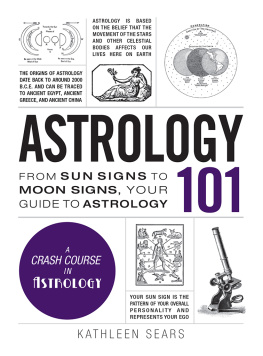

Cover image: the horoscope of the creation of the world, dedicated to the future Henry VIII, including a world map, the four winds, the signs of the zodiac (in gold), the planets in their degrees of exaltation (except Mercury) and the twelve astrological places: I (beginning of) life; II moveable property and helpers; III siblings, short journeys and religions; IV parents, immoveable property and ships; V children and entertainment; VI illnesses and servants; VII marriage and controversies; VIII death and inheritance; IX religion and long journeys; X rulership and profession; XI friends and hope; XII enemies and large animals.
The British Library Board, Royal 12 B. VI, f. 1. Used with permission.
Sophia Centre Press 2015
First published in 2015.
All rights reserved. No part of this publication may be reproduced or utilised in any form or by any means, electronic or mechanical, including photocopying, recording, or by any information storage and retrieval system, without permission in writing from the Publishers.
Sophia Centre Press
University of Wales, Trinity Saint David,
Ceredigion, Wales SA48 7ED, United Kingdom.
www.sophiacentrepress.com
ISBN 978-1-907767-06-7
ISBN 978-1-907767-66-1 (e-book)
British Library Cataloguing in Publication Data.
A catalogue card for this book is available from the British Library.
Printed in the UK by Lightning Source.
DEDICATION
In memoriam
Giuseppe Bezza
21 September 1946 18 June 2014
amico nostro, caro et docto
CONTENTS
Charles Burnett and Dorian Gieseler Greenbaum
Giuseppe Bezza
Jean- Patrice Boudet
Bernadette Brady
Geoffrey Cornelius
Meira Epstein
Miquel Forcada
Dorian Gieseler Greenbaum
Robert Hand
Stephan Heilen
Jan Hogendijk
Piergabriele Mancuso
Josefina Rodrguez- Arribas
H. Darrel Rutkin
Julio Sams
Petra Schmidl
Shlomo Sela
Graeme Tobyn
Steven Vanden Broecke
ABSTRACTS
Giuseppe Bezza
SaturnJupiter Conjunctions and General Astrology: Ptolemy, Ab Mashar and Their Commentators
This essay explores the tradition of SaturnJupiter conjunctions in astrological techniques, from its beginnings in the use of the revolution of the year in natal astrology, to its transference into general astrology by early Arabic astrologers. Commentaries on both Ptolemy and Ab Mashar deal with this doctrine. The first part of the essay looks at the conjunctionist theories of Ab Mashar and locates them in natural movements as described by Aristotle, but with Ab Mashars own interpretation and hierarchy. He relates his scheme to the influence of heavenly bodies on earth. Scholastic philosophers took similar positions in discussing the influence and value of the planets, particularly the superior planets as a cause of stability. The closer to the prime mover the greater the planets perfection. Superior planets could also be guides to inferior ones applying to them by aspect, as Albertus Magnus claims. Later writers such as Nifo and Ciruelo privileged not the superior planets but the luminaries, following the Ptolemaic tradition. Others, such as Ibn Riwn, Naibod, Cardano and Kepler discussed conjunctionist theory with respect to doctrines in the (pseudo) Ptolemaic Centiloquium.
JeanPatrice Boudet
From Baghdad to Civitas Solis: Horoscopes of Foundations of Cities
In the original Italian version of La Citt del Sole (1602) and the Latin version of Civitas Solis (1637), Tommaso Campanella refers to two slightly different horoscopes of the City of the Sun. The second one is a real masterpiece of utopian astrology and a noteworthy achievement of Medieval and Renaissance research on the ideal city. This paper tries to find the earlier versions of this dream and reconstitute some of its experimentations. In contrast with most of the Ancient and Byzantine Greek horoscopes of cities, the foundation chart of Baghdad seems to show the difference between an ideal horoscope and an election of the better moment to initiate a major political event. We have some astrological indications about foundations of other cities in the Medieval Middle East but for the Latin Middle Ages, the material is poor and no original horoscope of a city is preserved from this period. However, Giovanni and Filippo Villani seem to refer to a real horoscope of Florence which could have been cast by Cecco of Ascoli ( 1327), and the Cinquecento may be considered as the golden age of the horoscopes of cities, with a remarkable competition between the main Italian urban states and their champions in this matterLuca Gaurico, Girolamo Cardano and Francesco Giuntiniwho copied and modified a largely common astrological practice with an important manipulation. Almost all of these horoscopes are not properly catarchic, but try to explain a posteriori the major historical events of the cities. Between the two opposite exceptions of Baghdad and the City of the Sun, the great majority of foundation horoscopes seem to be attempts for retrospective and historical analysis.
Bernadette Brady
Galileos Astrological Philosophy
Within the history of science questions have been asked as to the source of Galileos approach to his natural philosophy. This paper addresses these questions through a consideration of Galileos astrological papers known as the Astrologica nonnulla. This paper argues that the Arabic style of astrology used by Galileo was in itself a challenge to Aristotles physics. This style of astrology emerged in the ninth century in parallel with Islamic occasionalism and was focused on recording the changeability of the planets in the heavens and reducing them to a number value. This reductionism was undertaken to achieve a level of predictability in the believed incalculable Aristotelian sublunar realm. This paper suggests that this style of astrology provided Galileo with the thinking space which allowed him to work outside the Aristoteliandominant world view.
Geoffrey Cornelius
Interpreting Interpretations: The Aphorism in the Practice of the Renaissance Astrologers
How may we interpret the interpretations of the astrologers? This hermeneutic question is approached through the ubiquitous astrological device of the aphorism. Underlying the apparently arbitrary assemblage of these pithy maxims we discern a thematic methodology of exemplary connotation and metaphor. Theory and practice need to be distinguished, which permits going beyond the often merely nominal AristotelianPtolemaic gloss by which Renaissance astrologers might justify their craft. This reveals a poetic and divinatory form, wherein the meaning of the aphorism is determined by its context, the temporality and linguistic mood of its interpretation, viz. whether speculative and conjectural, the subjunctive of prediction, or assigned and revealed, the indicative of the casebook demonstration. This divinatory stochastic analysis necessitates a readingagainst the historical and theoretical view of astrology as protoscience. The problem of competing interpretations is illustrated with reference to a horoscope study by Girolamo Cardano, where it is suggested that contemporary scholarship, to the extent that it lacks an appreciation of astrological practice, has not adequately addressed the task of interpreting the astrologers interpretations.



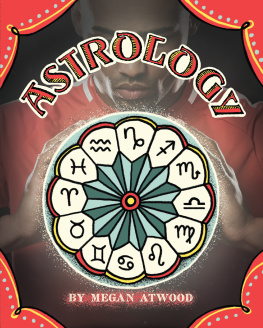
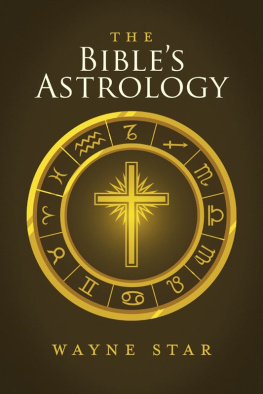

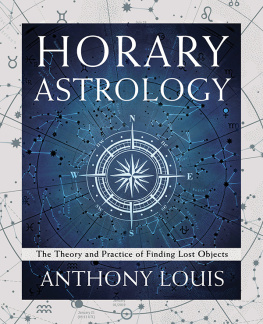
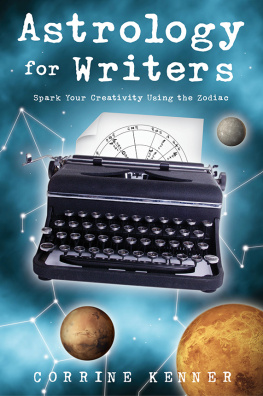
![Kevin B. Burk - Principles of Practical Natal Astrology: Talented Astrologer Training Book 1 [FIXED Layout EPUB]](/uploads/posts/book/156304/thumbs/kevin-b-burk-principles-of-practical-natal.jpg)

